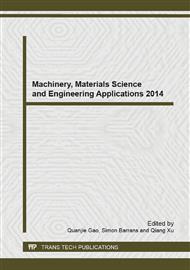p.469
p.475
p.480
p.485
p.491
p.495
p.499
p.503
p.509
Influence of Attributes Relationship to Parameter Estimation in DINA
Abstract:
DINA model appreciated by many researchers considers the relationships among attributes as mutually independent, conjunction and non-compensation relationship, but in real applications, there may not be able to meet such a relationship. Study the impacts on parameter estimates for the DINA model because of attribute relationships. Simulation results show that when there is a hierarchical relationship between attributes, there will be a great impact on the parameter estimation accuracy of DINA model; and the parameter estimation accuracy mainly affected by attribute hierarchy and the number of subjects. When existing hierarchy relationships among attributes, using DINA model as cognitive diagnosis model would affect the validity of diagnostic tests.
Info:
Periodical:
Pages:
491-494
Citation:
Online since:
June 2014
Authors:
Price:
Сopyright:
© 2014 Trans Tech Publications Ltd. All Rights Reserved
Share:
Citation:


